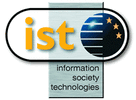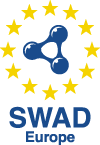| SWAD-Europe Thesaurus Activity |
Use Cases |
  |
As part of our development of a thesaurus web service API and open demonstrator project, we are collecting a list of use cases for terminology services. The document below describes the use cases collected so far, and will evolve as more are added.
This work is an open effort, and we encourage you to join in. We welcome any sort of use case or scenario in the context of terminology services. Please send your use case to Nikki Rogers or to the public-esw-thes@w3.org mailing list.
Abstract:
This document contributes to Workpackage 8. We show here the results of our initial efforts in collecting a public list of Use Cases for all applications of thesaurus and similar services, typically in distributed environments. These Use Cases will be used as the basis for defining the SKOS thesaurus web service API. The definition of this web service API will then form the basis for effort on Deliverable 8.7 - development of a public Research Prototype Demonstrating RDF Thesaurus Technology. For more information and reports on thesaurus service API and prototype development please see the SWAD-Europe Thesaurus Activity page at http://www.w3.org/2001/sw/Europe/reports/thes/. We intend the development of these Use Cases to be conducted as a public discussion.
Maintained by Alistair Miles and Nikki Rogers, last updated 27/09/04.